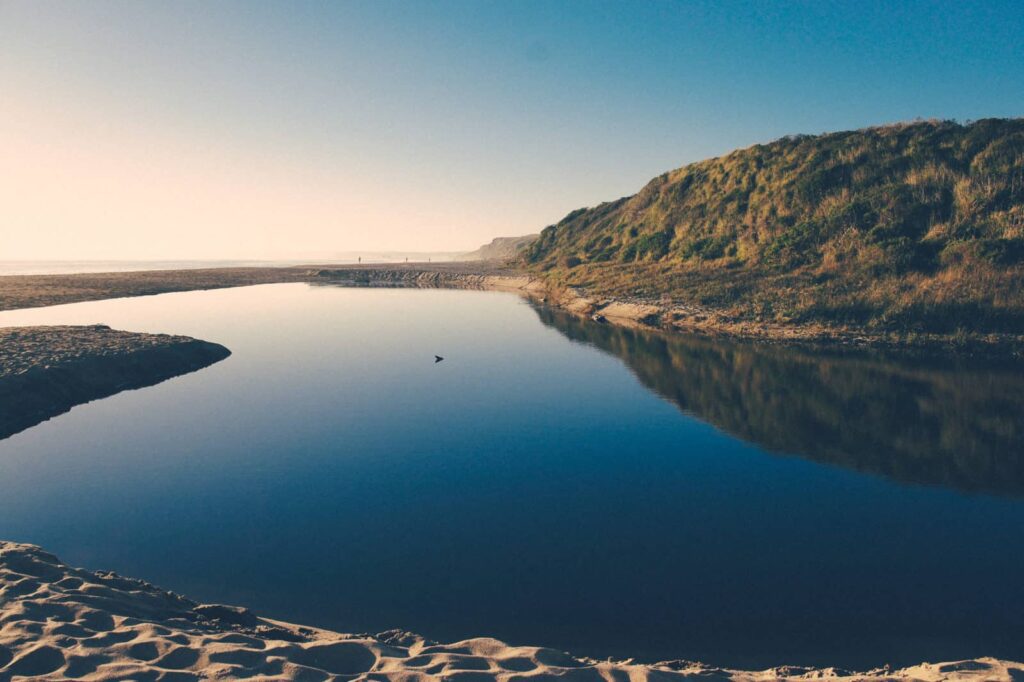What exactly is brackish water? Is it freshwater or seawater? If you’ve ever pondered these questions, you’re in the right place. Here, we delve into the intriguing world of brackish water, offering insights into what it is, where you can find it, and the array of creatures that call it home.
Unraveling the Enigma of Brackish Water
Brackish water is a unique blend, having more salt than freshwater but less than seawater. It’s a fascinating manifestation of nature’s diversity, predominantly formed when seawater and freshwater come together. The salinity of brackish water varies from 0.5 to 30 grams of salt per liter. Rainfall can shift the boundaries between salt and freshwater, resulting in fluctuating volumes of brackish water.

Locating Brackish Water: Estuaries and More
Brackish water is commonplace in river estuaries, which serve as mixing pots where freshwater meets seawater. Famous estuaries, such as the Amazon River, Chesapeake Bay, Fleet Lagoon, Hampton Roads, Hudson River, and Thames Estuary, play a crucial role in shaping local water levels and attracting diverse brackish water species.
Moreover, estuaries are often shallow, and sunlight exposure creates welcoming conditions for various organisms. But estuaries are not the only abode for brackish water. Certain seas and lakes, like the Caspian Sea — the world’s largest lake — already contain a salt concentration of around one-third that of ordinary seawater.
Brackish Water Biodiversity: A Spectrum of Species
Many brackish water bodies can be hostile to the survival of certain species. Yet, the organisms that inhabit brackish waters, including fish, algae, shrimp, oysters, and marsh grass, exhibit remarkable adaptations for surviving in saline water.
Fish found in brackish water are often robust and healthy due to the high fertility of the water. Species such as redfish and striped bass, typically freshwater fish, comfortably traverse brackish regions. Notably, the arrowhead and fahaka puffer fish, which can grow up to 43 cm long, feed on snails and mussels and thrive in brackish waters.
Gobies, scats, and gars also form part of the brackish ecosystem. Scats typically start their life in freshwater, transitioning to brackish water as they mature. Gars, often found in freshwater, move through brackish water adapting to varying salinity levels. The archerfish, a brackish water resident, is famed for its unique hunting technique: shooting water spouts to knock down insects from 1-2 meters away.
Brackish Water Flora: From Cabomba to Cryptocoryne
An array of freshwater plants also thrives in brackish water. Species such as anacharis, Cabomba, hornwort, wisteria, anubias, cryptocoryne, and Vallisneria have adapted to life in this environment. However, as salinity levels can fluctuate significantly, each plant species has its own specific salinity threshold.
Cabomba, also known as fanwort, is a beautiful, fast-growing aquarium plant that can endure low-salinity brackish water. On the other hand, plants like C. Ciliata species of cryptocoryne can tolerate much higher salinity levels than most aquarium plants.
Measuring Brackish Water’s Specific Gravity
One way to describe the salinity level in brackish water is through its specific gravity — the ratio of the water’s density to that of pure water. You can use a refractometer or hydrometer to accurately measure this characteristic, offering a more precise understanding of brackish water’s composition.
Wrapping It Up: The Dynamic World of Brackish Water
From providing habitat to a diverse range of species to influencing local water levels, brackish water holds a significant place in the Earth’s water system. Its adaptability and the resilience of the species it hosts are yet another testament to the rich diversity of our planet. As we continue to study and understand these fascinating waters, we uncover more of the interconnectedness and adaptability of life on Earth.

Jay
Jay is a health and wellness enthusiast with expertise in water quality and nutrition. As a knowledgeable advocate for holistic well-being, Jay successfully manages Type 2 Diabetes through informed lifestyle choices. Committed to sharing reliable and authoritative insights, Jay combines firsthand experience with a passion for enhancing health."

